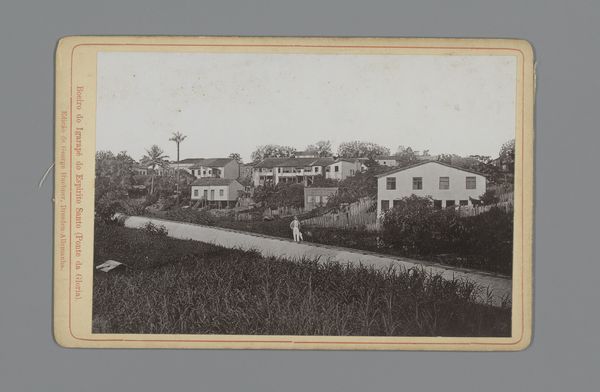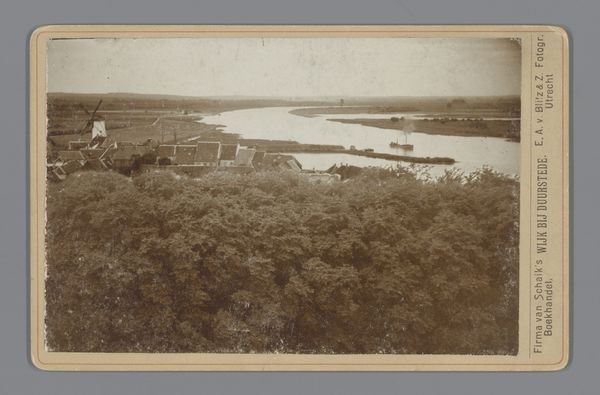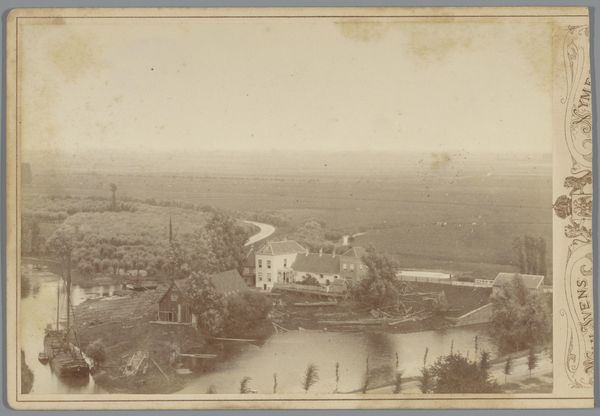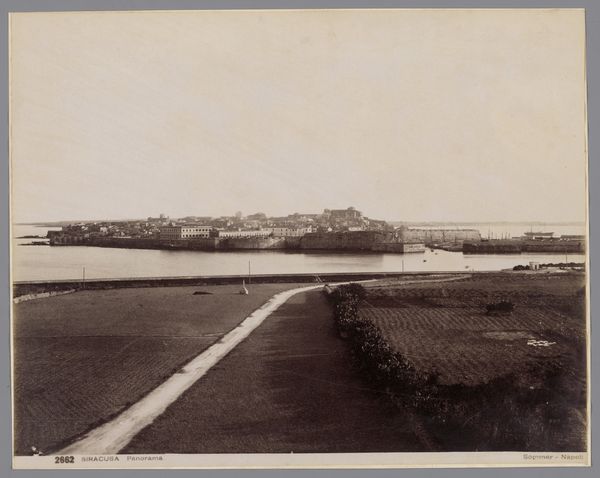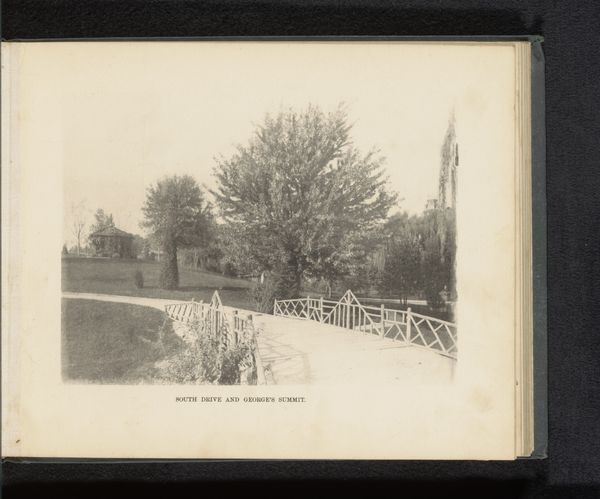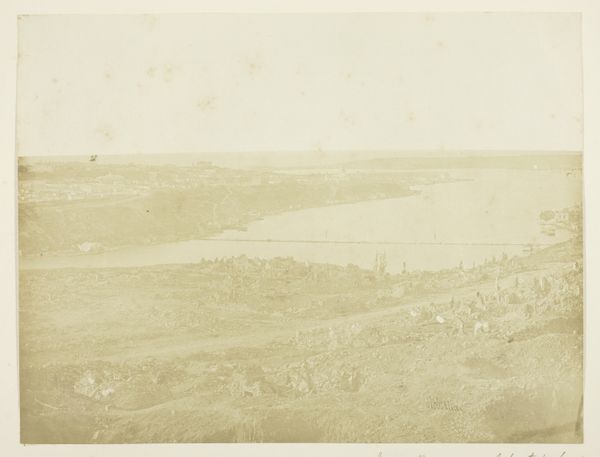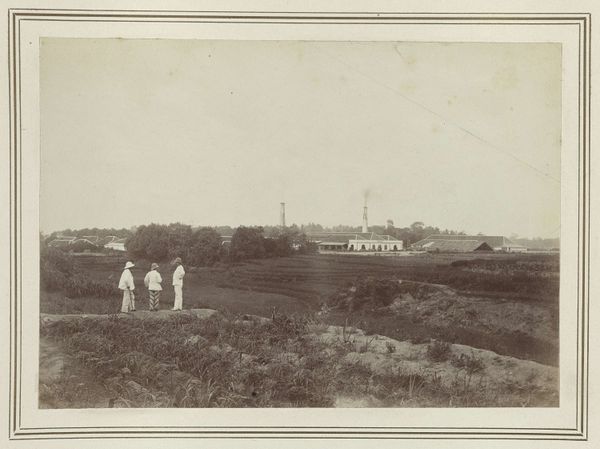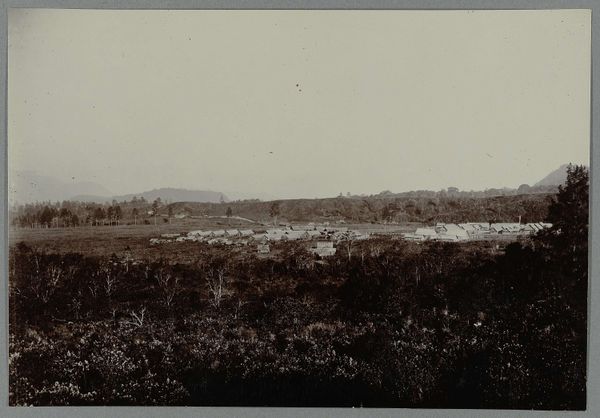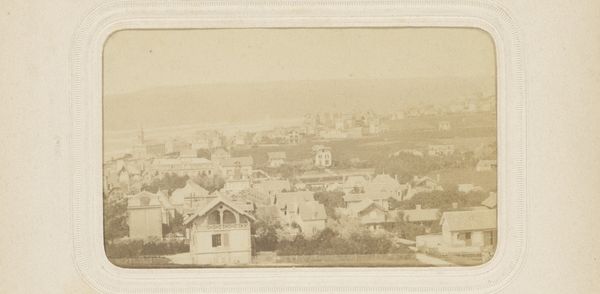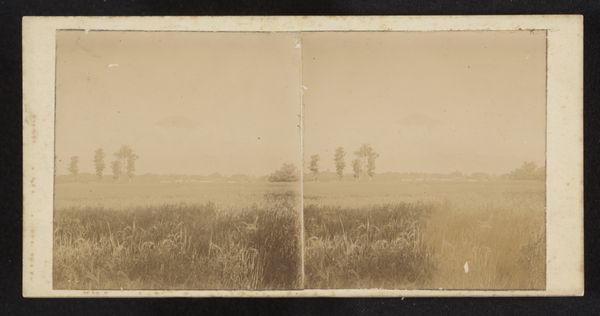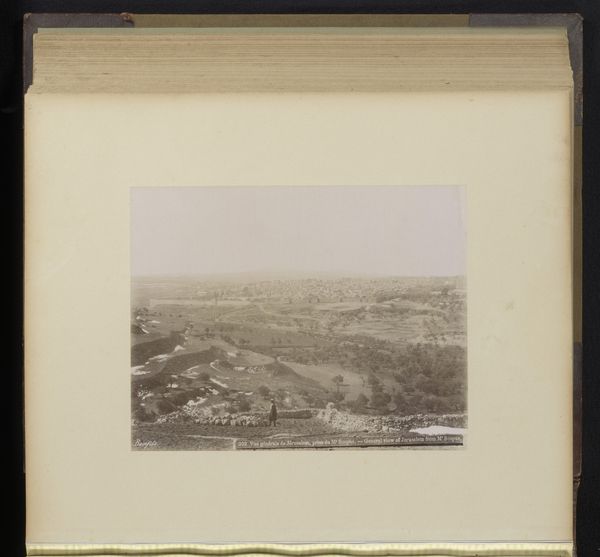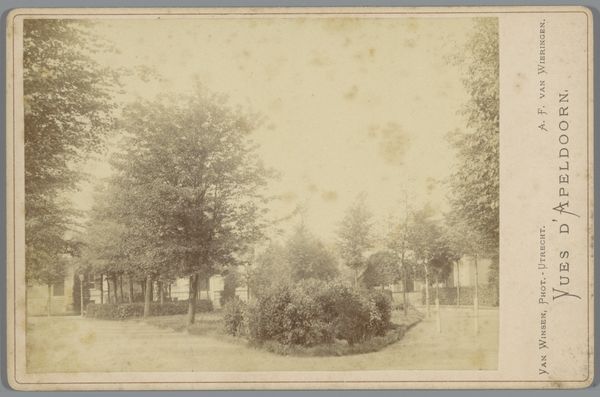
photography, gelatin-silver-print
#
portrait
#
pictorialism
#
impressionism
#
landscape
#
photography
#
desaturated colour
#
gelatin-silver-print
#
realism
Dimensions: height 100 mm, width 142 mm, height 108 mm, width 156 mm
Copyright: Rijks Museum: Open Domain
Curator: Here we have an intriguing gelatin-silver print, likely produced between 1870 and 1890, titled "Personen in een landschap met op de achtergrond een dorp of stad", which translates to "People in a Landscape with a Village or City in the Background," attributed to J.W. Wentzel. Editor: My first impression is one of serene melancholy. The sepia tones lend a dreamlike quality, while the vast expanse of the field dwarfs the two figures, giving them a poignant isolation. Curator: I agree, there's a fascinating juxtaposition at play. The composition is divided into three distinct horizontal layers: the textured foreground, the midground populated by a few figures, and a barely visible skyline with suggested architectural shapes. Editor: Indeed, that background village almost acts as a collective ancestral memory, a site of both longing and belonging, barely present but powerfully resonant. The church spire particularly—an age-old symbol of stability. I’m curious about the clothing of the two foreground figures. They seem to represent some kind of lost social stratum. Curator: Let's consider the way the artist uses the photographic medium itself. This print bears marks of what might now be referred to as post-processing and even some degree of manipulation which are intrinsic features of Pictorialism—note that deliberate blurring gives a certain flattening effect, softening the realism in the subjects to serve atmospheric effect instead. Editor: Right. Pictorialism embraced the artistic potential of photography. This brings forth ideas of how photographs were not intended as records of a thing, person, or place—it transcends to document an aura and a certain emotive effect from an individual viewpoint. Curator: Exactly! The tonal gradations are masterfully handled, achieving a sophisticated balance of light and shadow. In contrast to strict realism it offers itself to a more open reading with an artistic vision. Editor: I think that’s right—we could understand the visual qualities in the art offering cultural connections that can create narrative depth, speaking to themes of societal transformation and lost idylls of small town folk. The use of sepia inherently evoking nostalgia. Curator: Yes. When viewed through this formal lens, it serves to amplify those impressions through tone, layering, composition... Editor: And its inherent symbolism. It shows us how images live in our minds and can be powerfully charged reminders that give memory to us across eras. Curator: Indeed, making it more than just an image, but a potent signifier and container of meanings. Editor: A powerful evocation indeed.
Comments
No comments
Be the first to comment and join the conversation on the ultimate creative platform.
